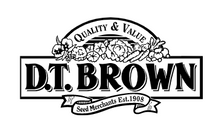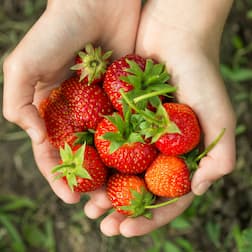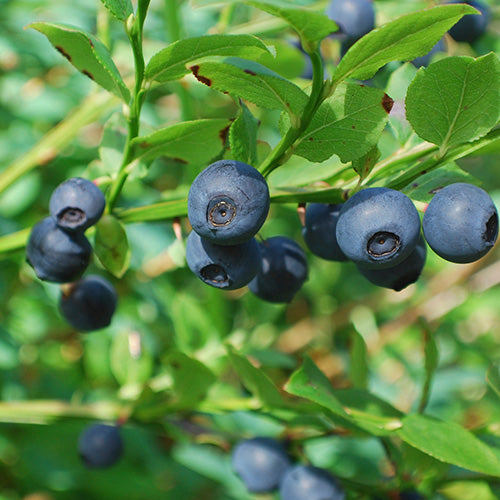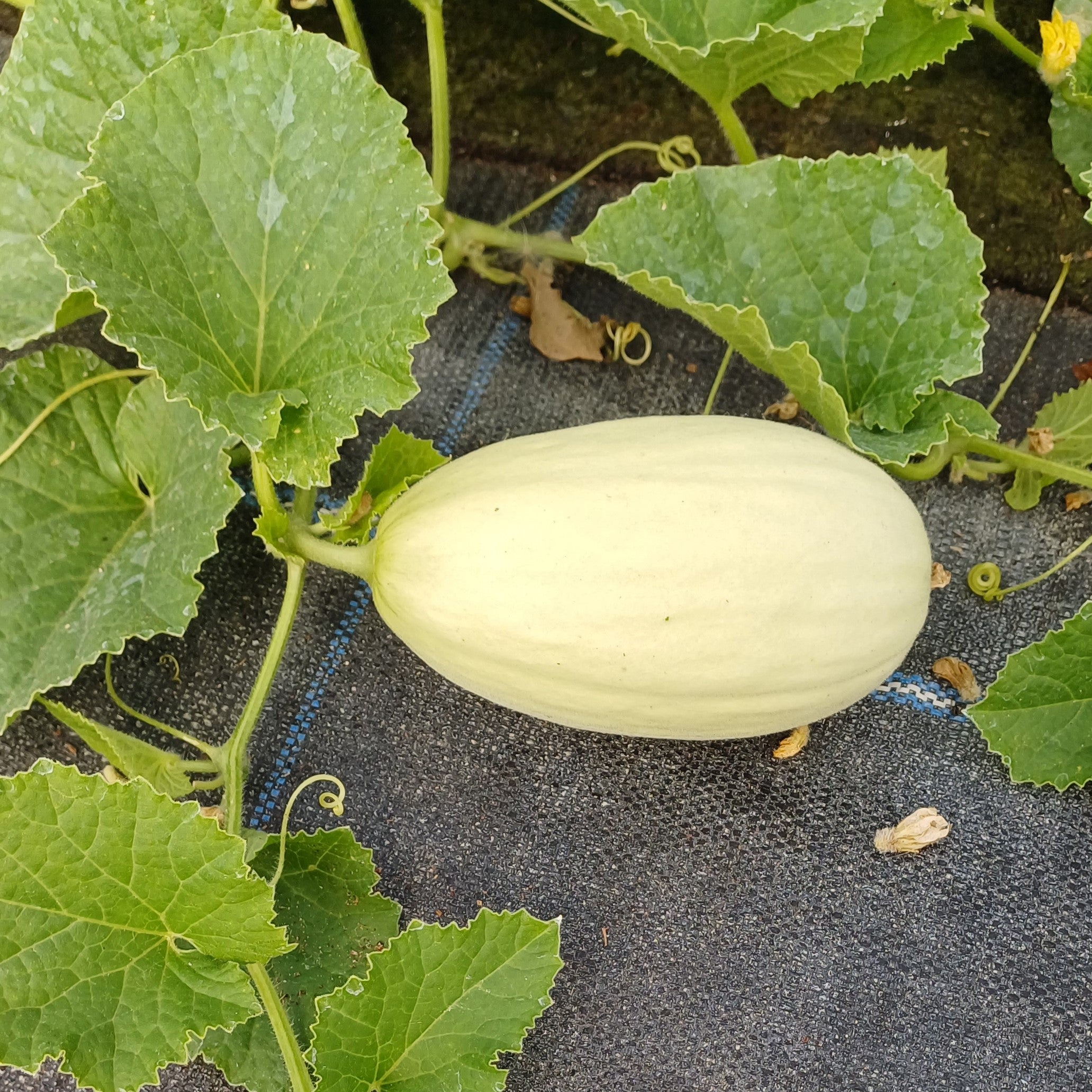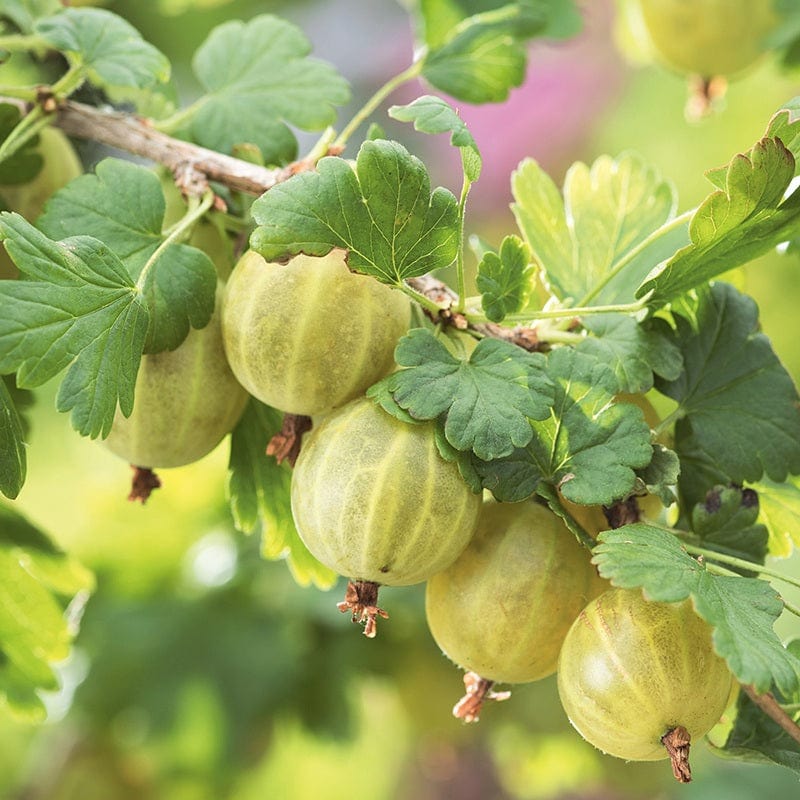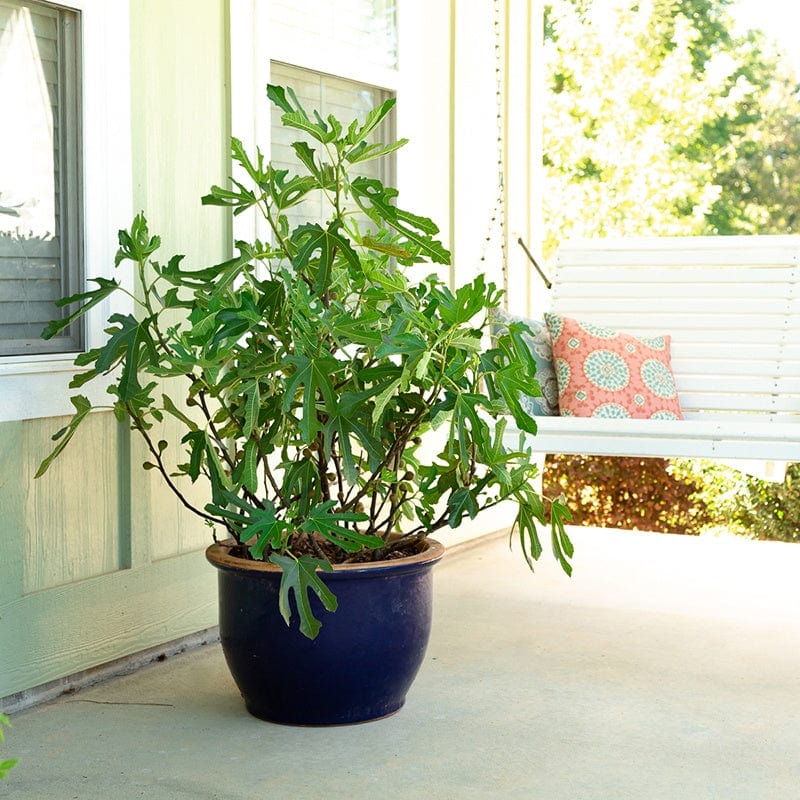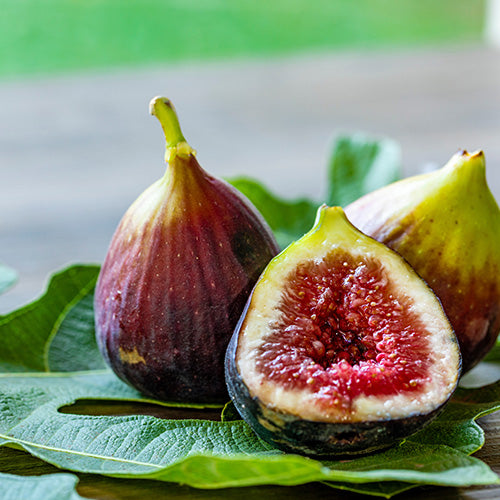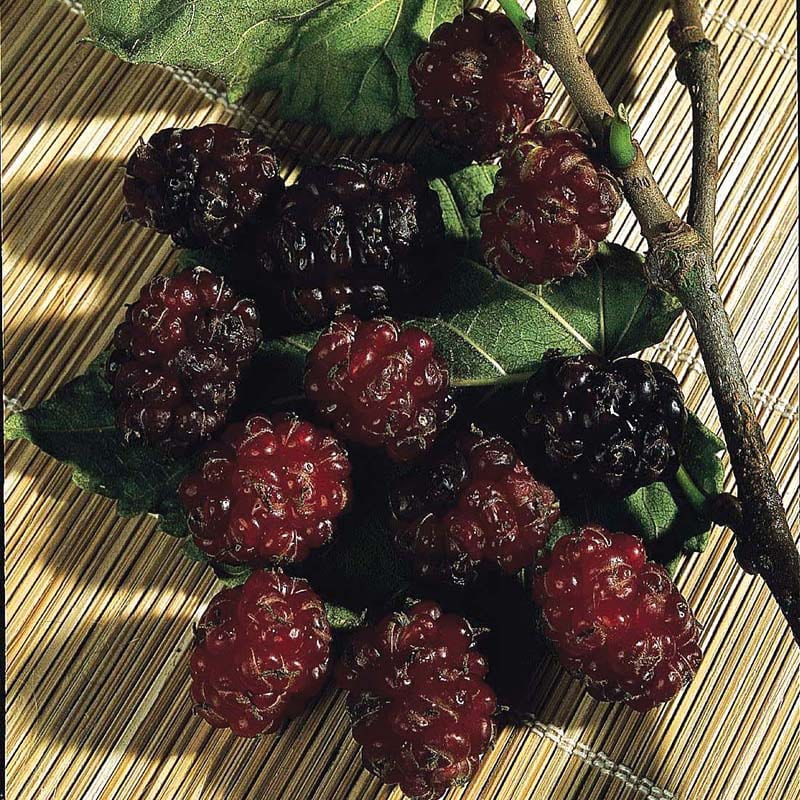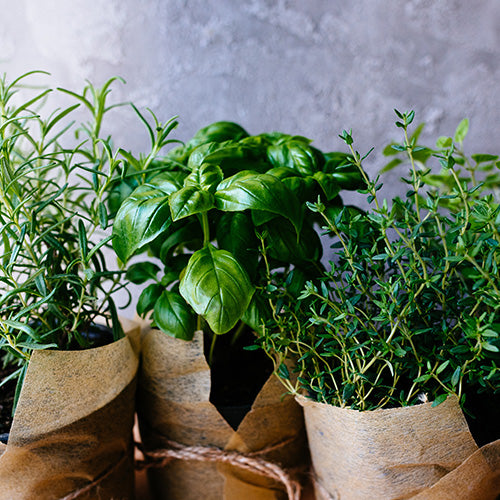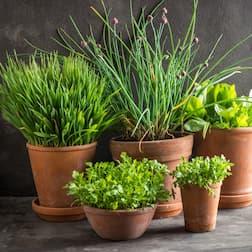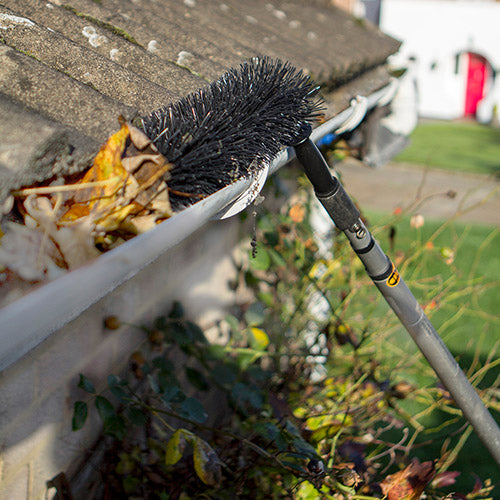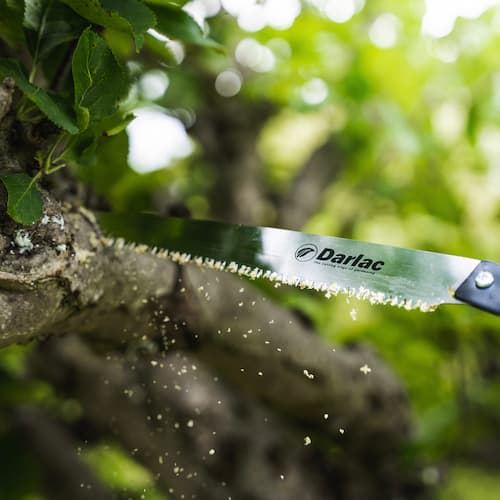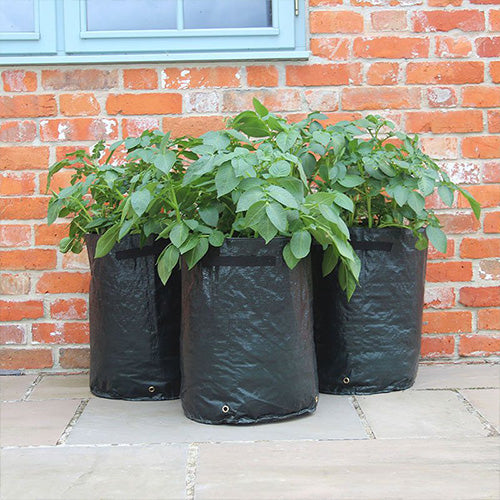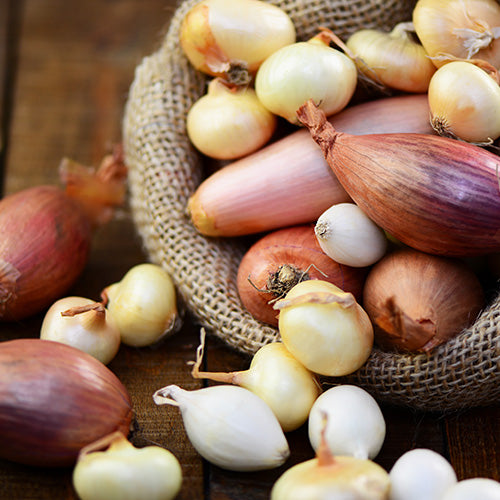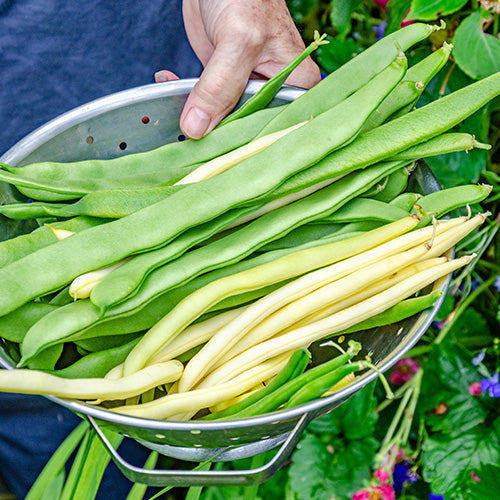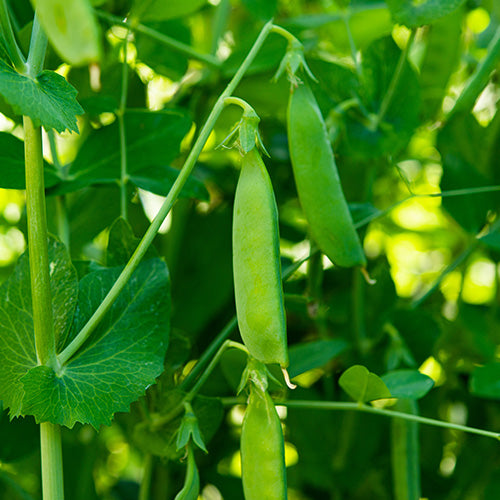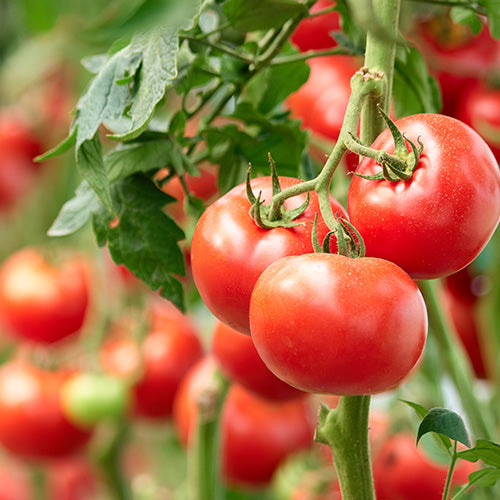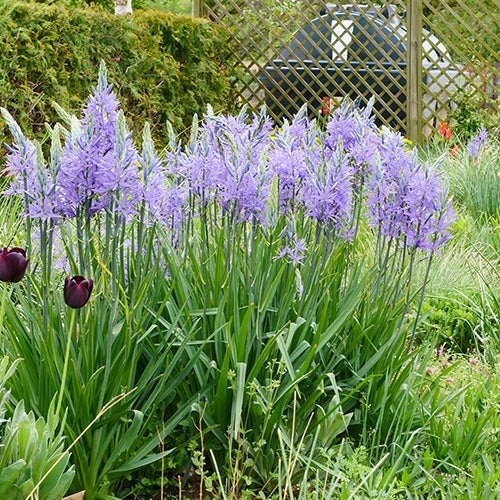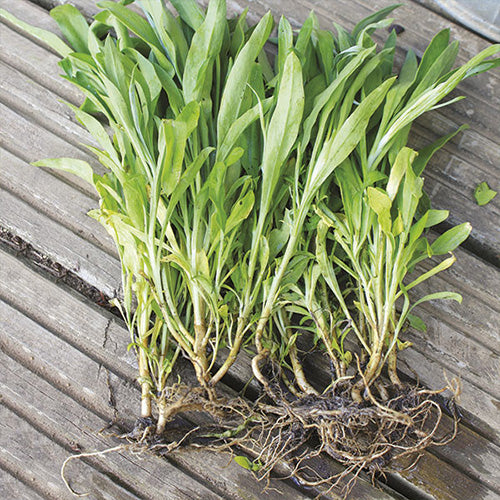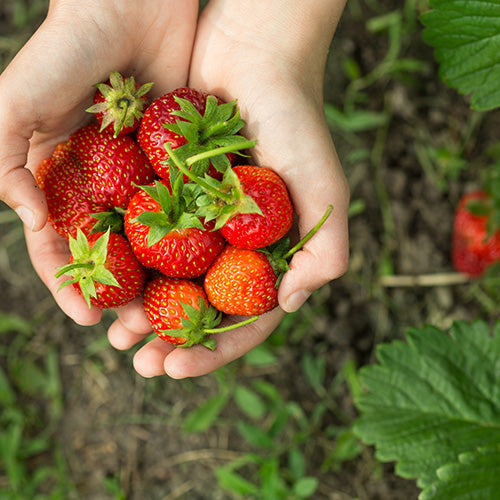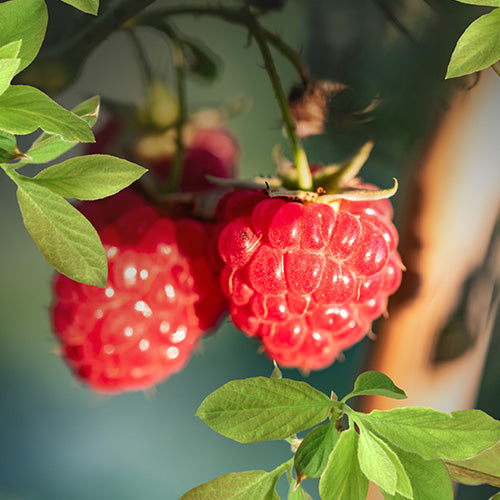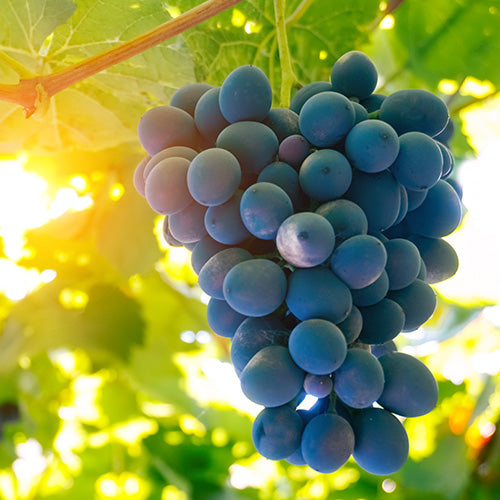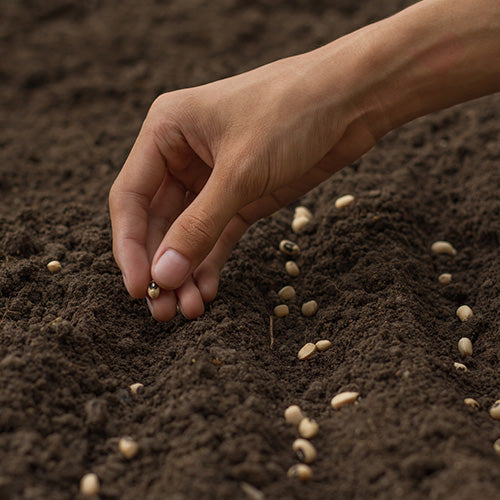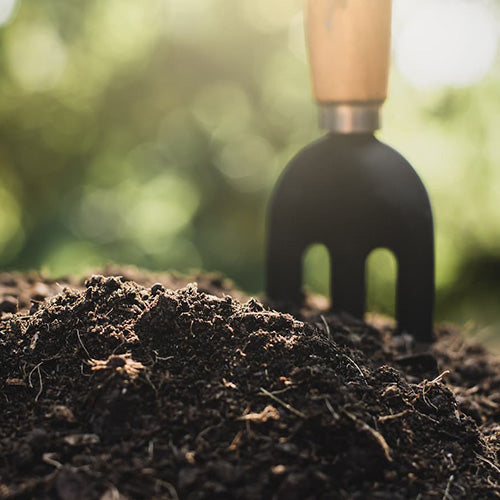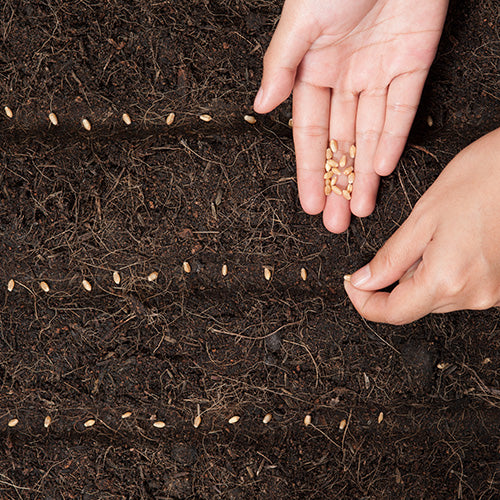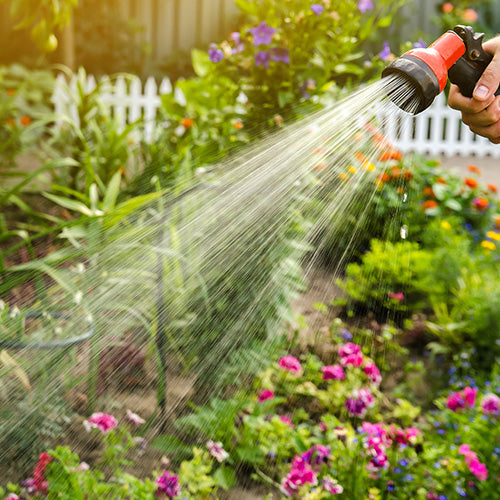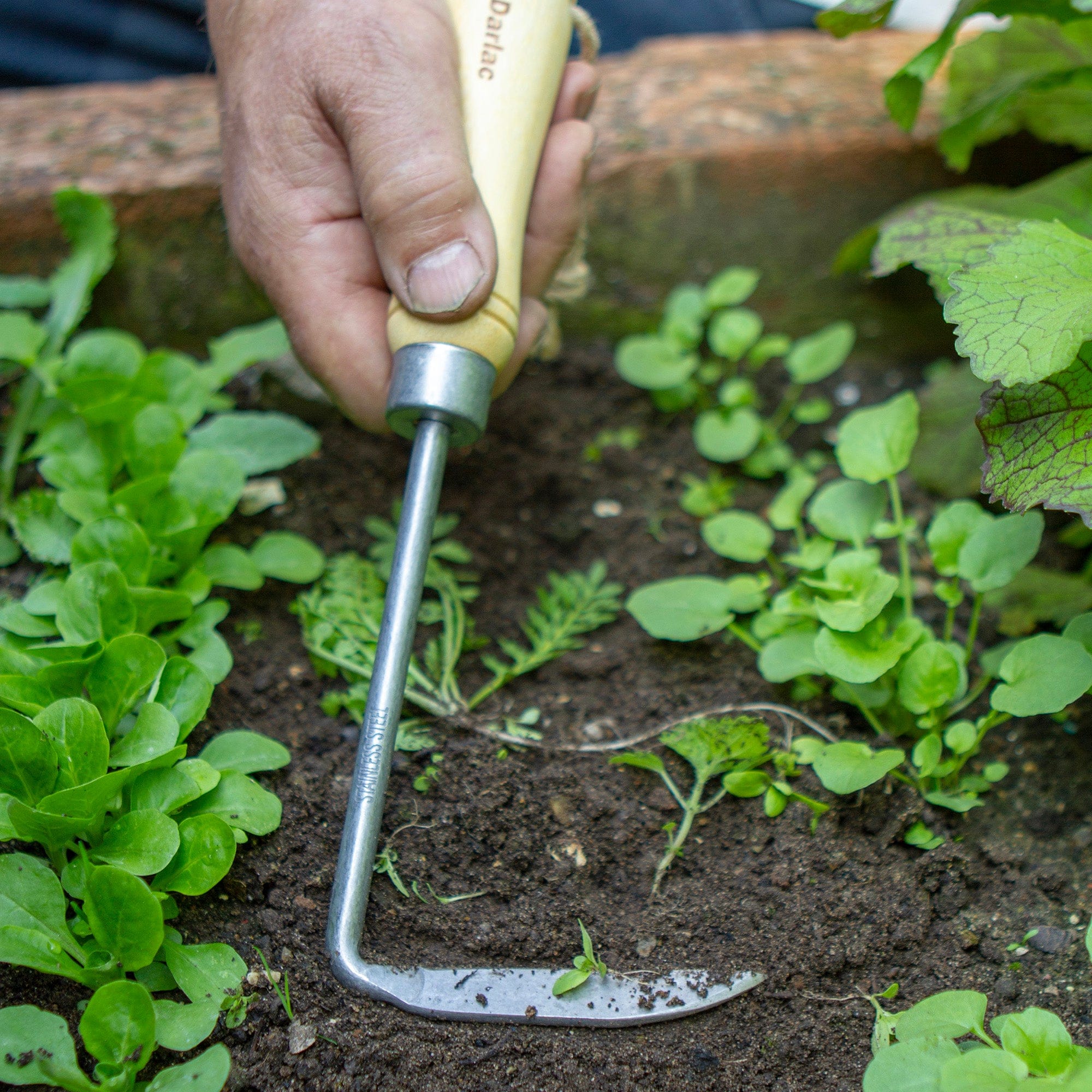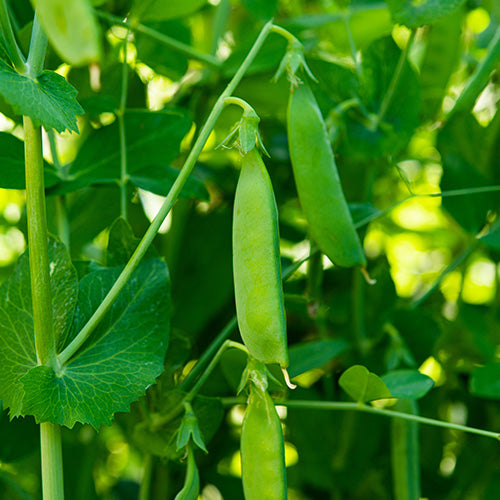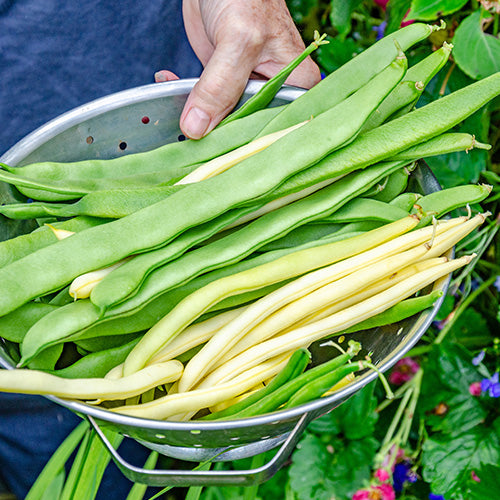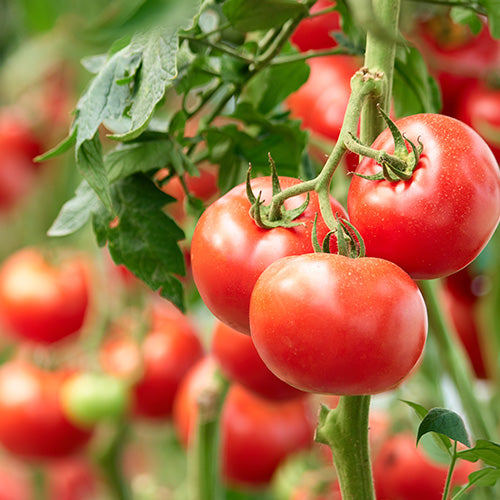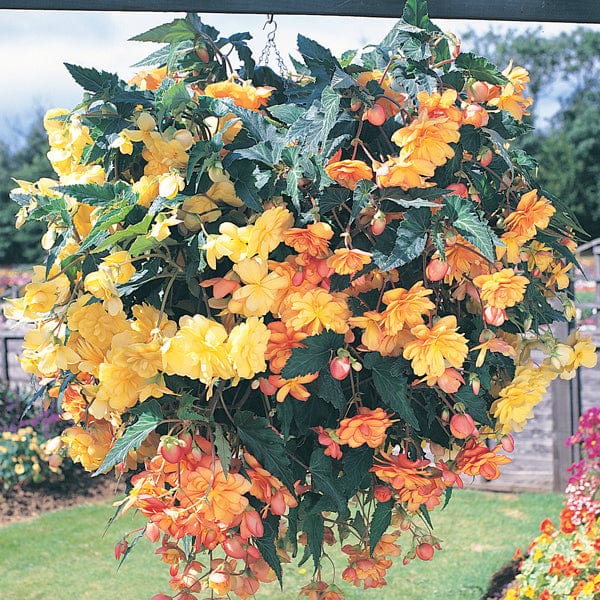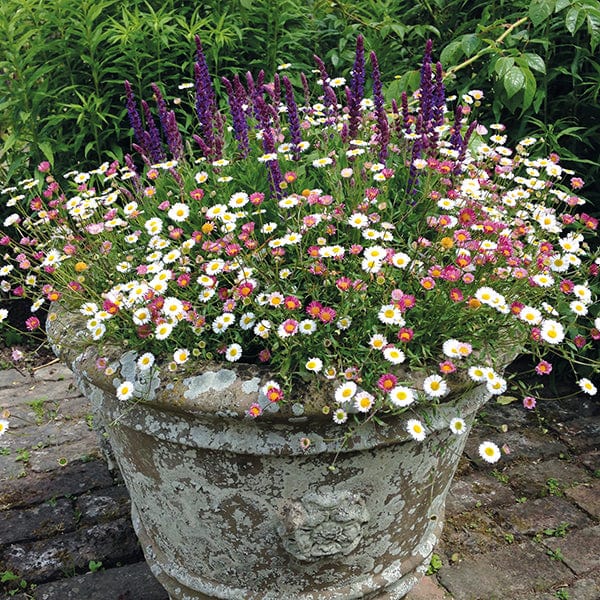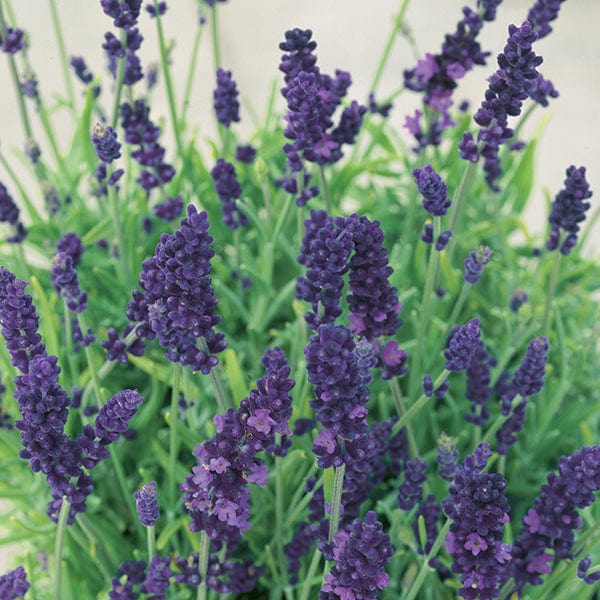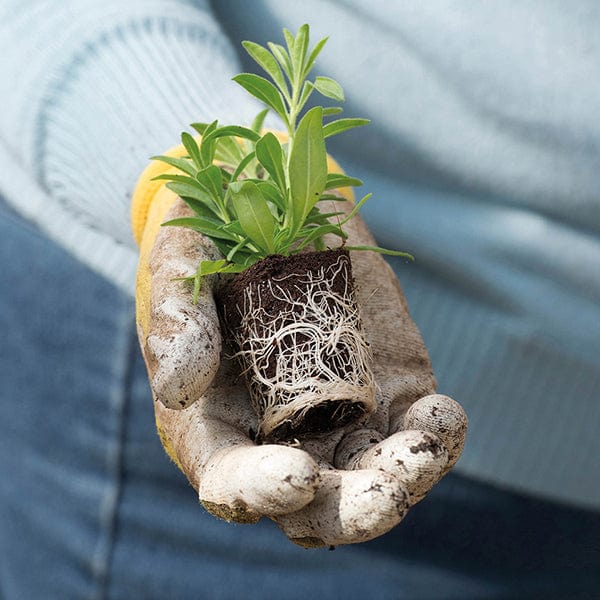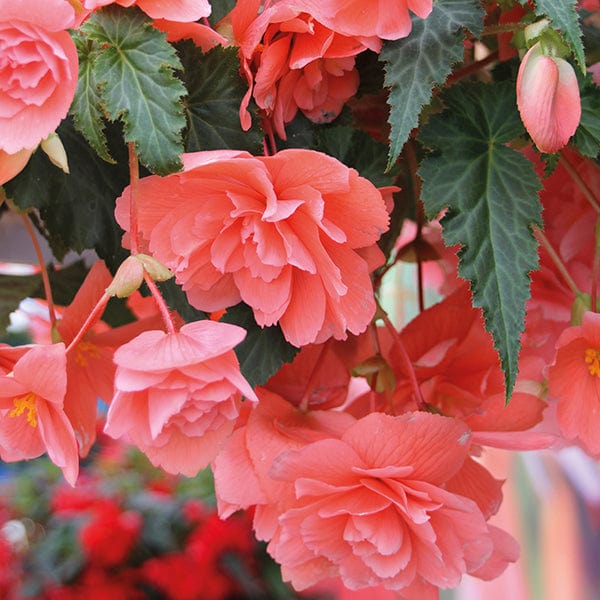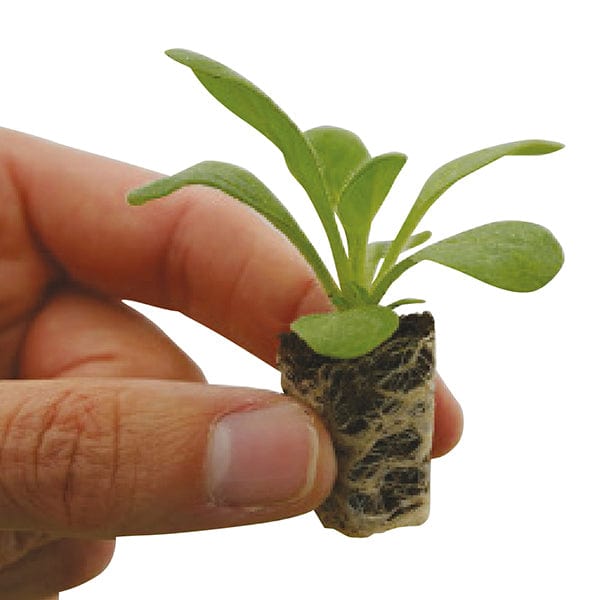Dried peas, frozen peas and even freshly brought peas just can’t beat the flavour of freshly picked, home grown peas! It’s true, as soon as the pea is picked the sugars they contain start to turn to starch.
Peas can be tricky to grow but they are definitely worth persevering with, though Mangetout and Sugar Snaps are generally easier to grow. Though, if you follow a few rules, growing a mixture of varieties, you can have fresh pods to pick from May until October.
Peas are categorised by when the pod will be mature (early, second early or early main and maincrop types) and the shape of the peas itself or to the pod. Round peas tend to be hardier and are often used for early and late crops, wrinkled are less hardy and generally sweeter.
Sowing
The easiest way to sow is dig out a flat bottomed trend with a spade 5cm (2in) deep and 15cm (6in) wide. Then sow the seeds evenly in the trench, in zigzag fashion, approximately 7.5cm (3in) apart, cover lightly with soil and firm down. If you require a second row, the distance between the rows should be the approximate height of the plants. Sow earlies or second earlies every 14-28 days from March to June to get a continuous crop.
First Earlies are sown from March to early June and will be ready to pick in 11 to 13 weeks. Second Earlies are sown from March to June and ready in around 14 weeks. Maincrops are sown from March to June and take up to 16 weeks. Some varieties are also hardy enough to be sown in October/November
Growing
Apart from dwarf varieties you will need to provide some support for the plants to scamble up. One of the easiest and most natural supports is to insert some twiggy branches alongside the plants when they are approximately 7.5cm (3in) tall. You could use pea netting for them to grow up but at the end of the season this can be a real pain to untangle the plants from.
Peas enjoy a cool season, so crops will be higher in cooler summers 13-18°C (55-65°F). They prefer an open spot which hasn’t grown peas for at least 2 years. Keep the peas weed free by hand-weeding, hoeing or mulching (this not only keeps the weeds down it also keeps the roots cool and moist).
Pests
The one pest you want to be careful of is pea moth – whose presence you’ll only notice when it comes to shelling your peas – the maggots will have got to them first! The female’s lay eggs just as the flowers fade and pods are developing, so this is the time to do something about it. Natural solutions include covering with fine mesh such as Enviromesh or using a pheromone trap.
Harvesting
Pods are ready to be harvested when they are well filled, when the pod is still fresh and green and haven’t started to dry out. Pick regularly or the plant will stop producing. If peas are to be dried leave on the plant as long as possible, lifting just before the seeds are shed. They then need to be spread out or hung in a cool airy place until they split and the peas can be harvested. Mangetout peas should be picked when the pods are about 7.5cm (3in) long and the peas are just starting to develop. All peas can be frozen, simply shell them and blanch in boiling water for 1 minute, allow to cool and freeze. Best used with 12 months of freezing.
Top Green Tip : All legumes need plenty of soil moisture. The easiest way to achieve this is to dig a trench in autumn, and fill it with moisture holding materials such as garden compost, but even shredded newspaper and unrotted garden waste can be used. Top off the trench with soil a fortnight before sowing or planting to give the contents time to settle. Water well during dry periods especially when the pods are developing.
